-
Defending against electromagnetic-pulse attacks
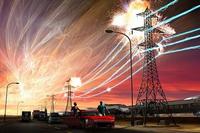
We are all familiar with the power of electromagnetic attacks from the movies: in “Ocean’s Eleven,” George Clooney’s gang disables Las Vegas’ power grid, and Keanu Reeves’ henchmen hold off the enemy robot fighters from their spaceship in the “Matrix Trilogy.” The heroes in the films succeed by sending out a very strong electromagnetic pulse, which changes the voltage in the vicinity so that regulators, switches, and circuit boards in electronic equipment go crazy. Researchers are now trying to figure out how such attacks can be detected. They have developed a measurement instrument for this purpose that is capable of determining the strength, frequency, and direction of electromagnetic attacks.
-
-
Deflecting asteroids to avoid Armageddon
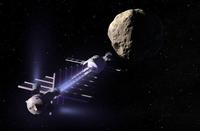
It sounds like the script for a Hollywood film: a giant meteorite from outer space heading straight for the Earth and threatening the destruction of mankind. Yet such a scenario does represent a real threat to our planet, as researchers reckon that we can expect an asteroid to collide with Earth every few hundred years. In real life, though, nobody wants to rely on a rescue plan hastily improvised at the last minute. Scientists with the European-funded research project NEOShield are working to develop concepts designed to help avert these impacts and to alter asteroids’ orbits as they race toward Earth.
-
-
Testing explosives capability helping armor research
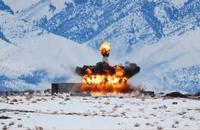
In modern warfare, military vehicles use enormous armored panels to defend against weapons. Boosting protection by adding more steel, however, eventually makes equipment too heavy to use. There are other ways to defend against a weapon besides trying to stop it with just mass — smarter, more economic ways that are waiting to be discovered.
-
-
Solar-powered, fabric-woven battery for “wearable electronics”
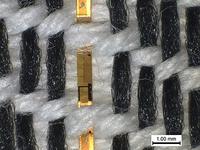
Though some people already seem inseparable from their smartphones, even more convenient, wearable, solar-powered electronics could be on the way soon, woven into clothing fibers or incorporated into watchbands. This novel battery development could usher in a new era of “wearable electronics.”
-
-
Research funding and reward structure contributes to formation “science bubbles”
Fashions in research funding, reward structures in universities, and streamlining of scientific agendas undermine traditional academic norms and may result in science bubbles. New research shows how the mechanisms that set off the financial crisis might be replicating in the field of science. The prevailing scientific reward structure thus amplifies social phenomena like “pluralistic ignorance” and “lemming effects,” which have been shown to have significant impact on information processing and assessment in populations of interacting persons — including in one of the most rational enterprises of modern social life.
-
-
Marines test latest battlefield IT at Agile Bloodhound ‘13
Marines in Hawaii last week demonstrated that using handheld devices and special software automatically to sift through loads of data can help ease information overload and deliver made-to-order intelligence to the front lines. “We’re trying to create a user-oriented world view for Marines,” said Col. William Zamagni. “Whether they’re in command centers with PCs, in vehicles with laptops or on foot with smartphones, Marines need access to the most pertinent information possible.”
-
-
Security agencies concerned about plastic guns
The Undetectable firearms Act of 1988, which makes it illegal to manufacture, import, sell, ship, deliver, process, transfer, or receive a firearm which is not detectable by walk-through metal detection, is set to expire on 9 December 2013. If Congress fails to reauthorize the law, plastic guns will no longer require metal components which are detectable by metal detectors. “When these 3D firearms are manufactured, some of the weapons can defeat normal detection such as metal detectors, wands, and it could present a problem to public safety in a venue such as an airport, an arena, a courthouse,” says ATF assistant director Richard Marianos.
-
-
Using biological organisms to convert natural gas to liquid transportation fuel

Researchers will use their expertise in protein expression, enzyme engineering, and high-throughput assays as part of a multiproject, $34 million effort by the Advanced Research Projects Agency-Energy (ARPA-E) aimed at developing advanced biocatalyst technologies that can convert natural gas to liquid fuel for transportation.
-
-
Drive-by charging: Advancing wireless power transfer for vehicles
Researchers have developed new technology and techniques for transmitting power wirelessly from a stationary source to a mobile receiver — moving engineers closer to their goal of creating highway “stations” that can recharge electric vehicles wirelessly as the vehicles drive by.
-
-
Rochester, Minn. wants to stop crime before it happens
The Rochester Police Departmentin Rochester, Minnesota is using IBM’s Infosphere Identity Insightto predict, and combat, crime. InfoSphere Identity Insight is used to identify frequent crime offenders, and even when multiple false identifications belonging to one individual are stored on record, the associated relationships of those identities could lead to the correct individual.
-
-
The Ergonomics of bomb-making at sea
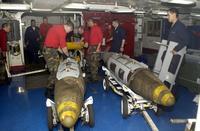
In an effort to stem work-related injuries and speed the assembly of munitions aboard aircraft carriers, the Office of Naval Research (ONR) spearheaded the development of a more efficient and ergonomic way to build bombs at sea. The ONR-sponsored improvements will allow sailors to move around more freely and assemble multiple bombs simultaneously on smaller, individual stands.
-
-
Emulating stingray movement to build next generation of submarines
Stingrays swim through water with such ease that researchers believe that emulating the fish’s unique way of swimming could improve deep-sea vehicles’ agility and fuel efficiency. “Most fish wag their tails to swim. A stingray’s swimming is much more unique, like a flag in the wind,” says one researcher.
-
-
Insects’ way of flying inspires design of tiny flying robots
Researchers have identified some of the underlying physics that may explain how insects can so quickly recover from a stall in midflight — unlike conventional fixed wing aircraft, where a stalled state often leads to a crash landing. The analysis improves the understanding of how insects fly and informs the design of small flying robots built for intelligence gathering, surveillance, search-and-rescue, and other purposes.
-
-
Advanced police surveillance technologies pose significant privacy concerns
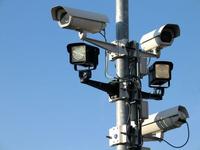
Much of the attention on surveillance in the media focuses on the National Security Agency (NSA), but there is not a lot of scrutiny on local domestic surveillance. In 1997, about 20 percent of police departments in the United States used some type of technological surveillance. By 2007, that number had risen to more than 70 percent of departments. Experts in criminal law and information privacy warn that the widespread use of advanced surveillance technologies such as automatic license plate readers, surveillance cameras, red light cameras, and facial recognition software by state and local police departments, combined with a lack of oversight and regulation, have the potential to develop into a form of widespread community surveillance, which ought to pose significant privacy concerns to law-abiding citizens.
-
-
U.S. Navy dominates competition for number, quality of patents
The IEEE evaluated more than 5,000 organization patent portfolios, across the seventeen industry sectors evaluated in its scorecard, for the number of patents issued as well as the growth, impact, originality, and general applicability across their respective portfolios. A laser with the potential to jam heat-seeking missiles and sniff out chemicals was one of 358 technologies patented by the U.S. Navy in 2012, helping the service dominate the government category in an annual ranking of patent portfolios published 23 October. It is an achievement the Navy has held since the scorecard added the government category in 2008.
-
More headlines
The long view
New Technology is Keeping the Skies Safe
DHS S&T Baggage, Cargo, and People Screening (BCP) Program develops state-of-the-art screening solutions to help secure airspace, communities, and borders
Factories First: Winning the Drone War Before It Starts
Wars are won by factories before they are won on the battlefield,Martin C. Feldmann writes, noting that the United States lacks the manufacturing depth for the coming drone age. Rectifying this situation “will take far more than procurement tweaks,” Feldmann writes. “It demands a national-level, wartime-scale industrial mobilization.”
How Artificial General Intelligence Could Affect the Rise and Fall of Nations
Visions for potential AGI futures: A new report from RAND aims to stimulate thinking among policymakers about possible impacts of the development of artificial general intelligence (AGI) on geopolitics and the world order.
Keeping the Lights on with Nuclear Waste: Radiochemistry Transforms Nuclear Waste into Strategic Materials
How UNLV radiochemistry is pioneering the future of energy in the Southwest by salvaging strategic materials from nuclear dumps –and making it safe.
Model Predicts Long-Term Effects of Nuclear Waste on Underground Disposal Systems
The simulations matched results from an underground lab experiment in Switzerland, suggesting modeling could be used to validate the safety of nuclear disposal sites.
